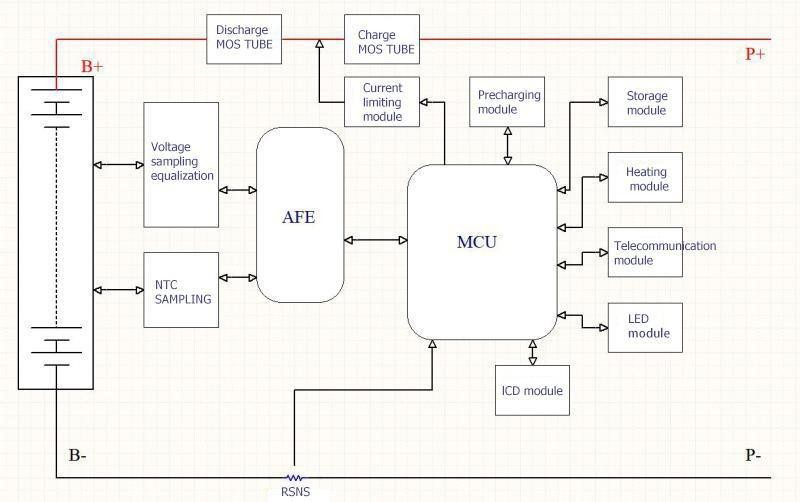TELECOM BATTERY MODULES
Why LITHIUM battery for Telecom?
Lithium is long-lasting
Lithium batteries provide up to 10 times longer life than lead-acid batteries, and they still provide 80% of rated capacity after 2,000 cycles, lasting 10+ years. The average lead-acid battery lasts two years, and requires regular maintenance. Lithium batteries require no active maintenance, and are a great value proposition for Telecom applications.
Lithium is Quick & Efficient
Lithium can charge and discharge at a high rate which minimizes downtime during charging, and provides the required burst of power during discharge. Lead-acid batteries, in contrast, suffer from long charging times and inefficient burst discharge. Also, lead-acid batteries are affected by temperature fluctuations and energy depletion. Lithium’s efficiency is high especially under high-stress situations, making it the logical choice for applications that demand high performance, particularly in extreme weather.
Lithium is the Lightweight Champ
LFP batteries provide more energy than lead-acid batteries and are typically half the mass, reducing concerns about battery weight. Compared to other battery types, LFP provides the same or greater energy at less than half the weight and size, and therefore offering greater flexibility and easier installation.
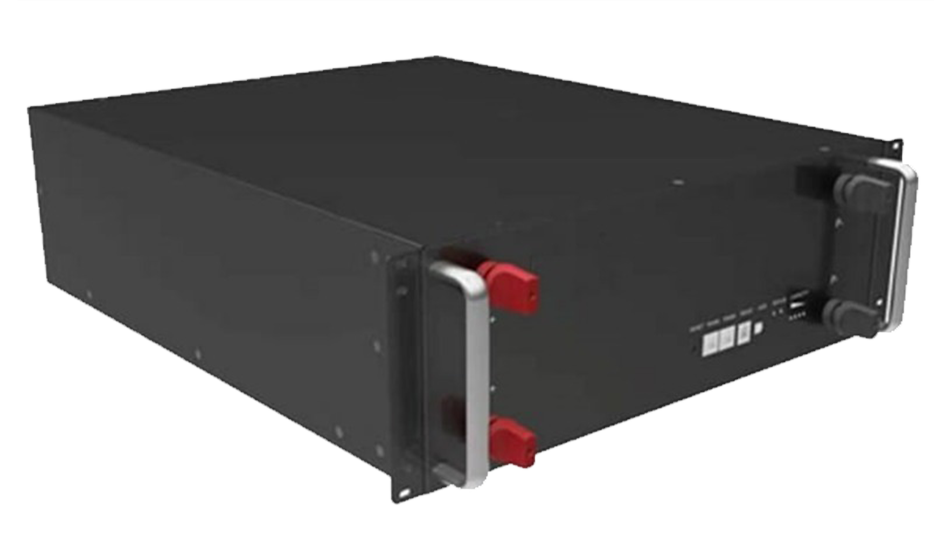
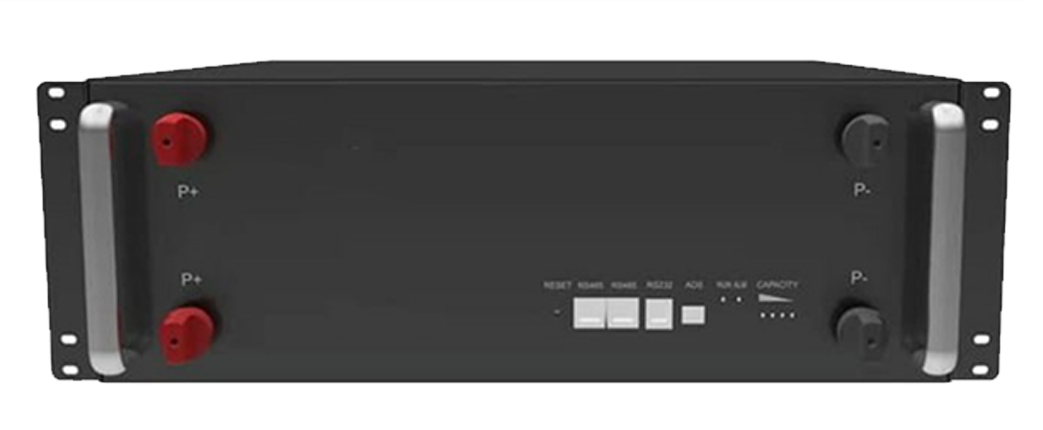
Technical Specification
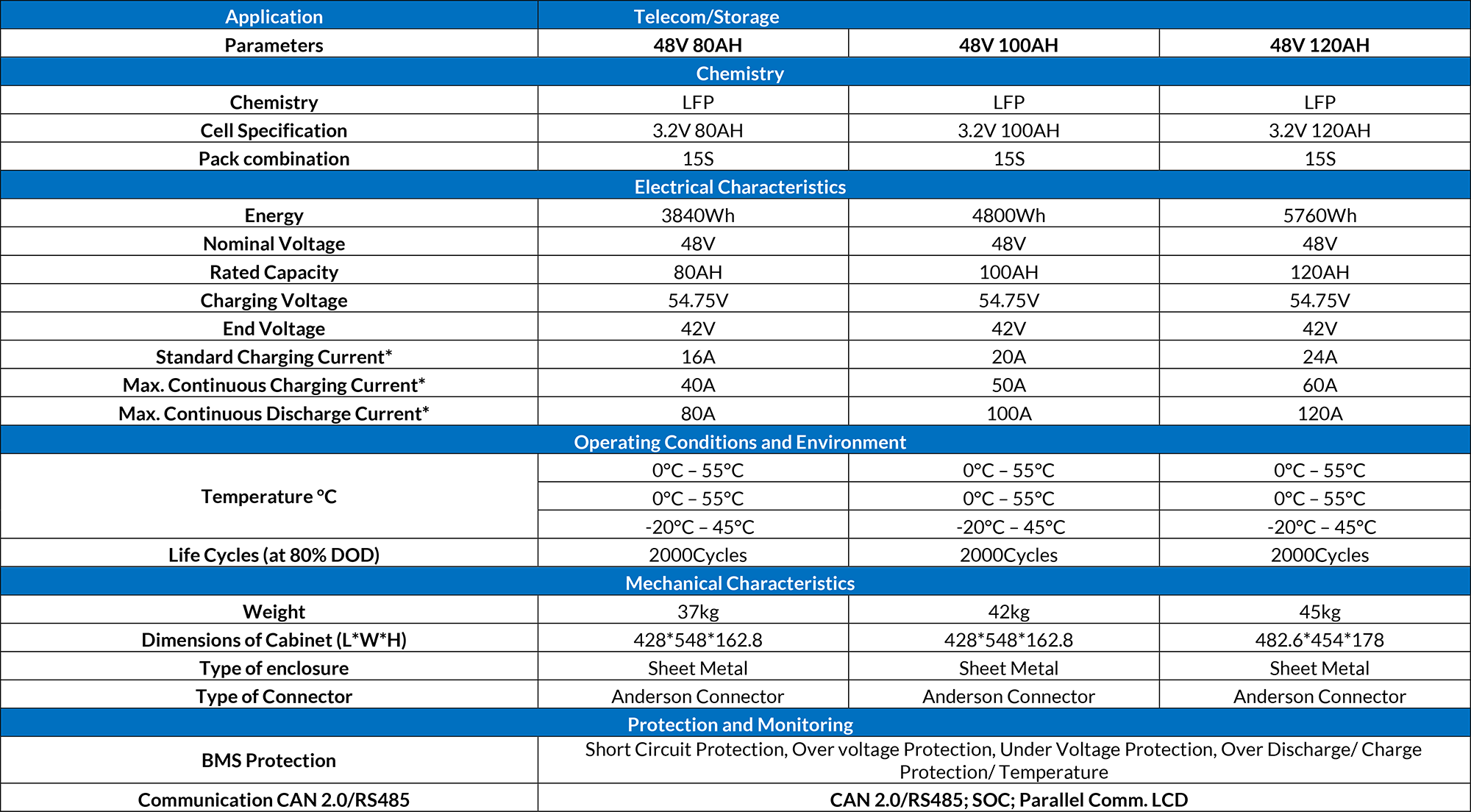
Note – Above is the standard Pack and can be scalable into rack type as per back time decided by customer.
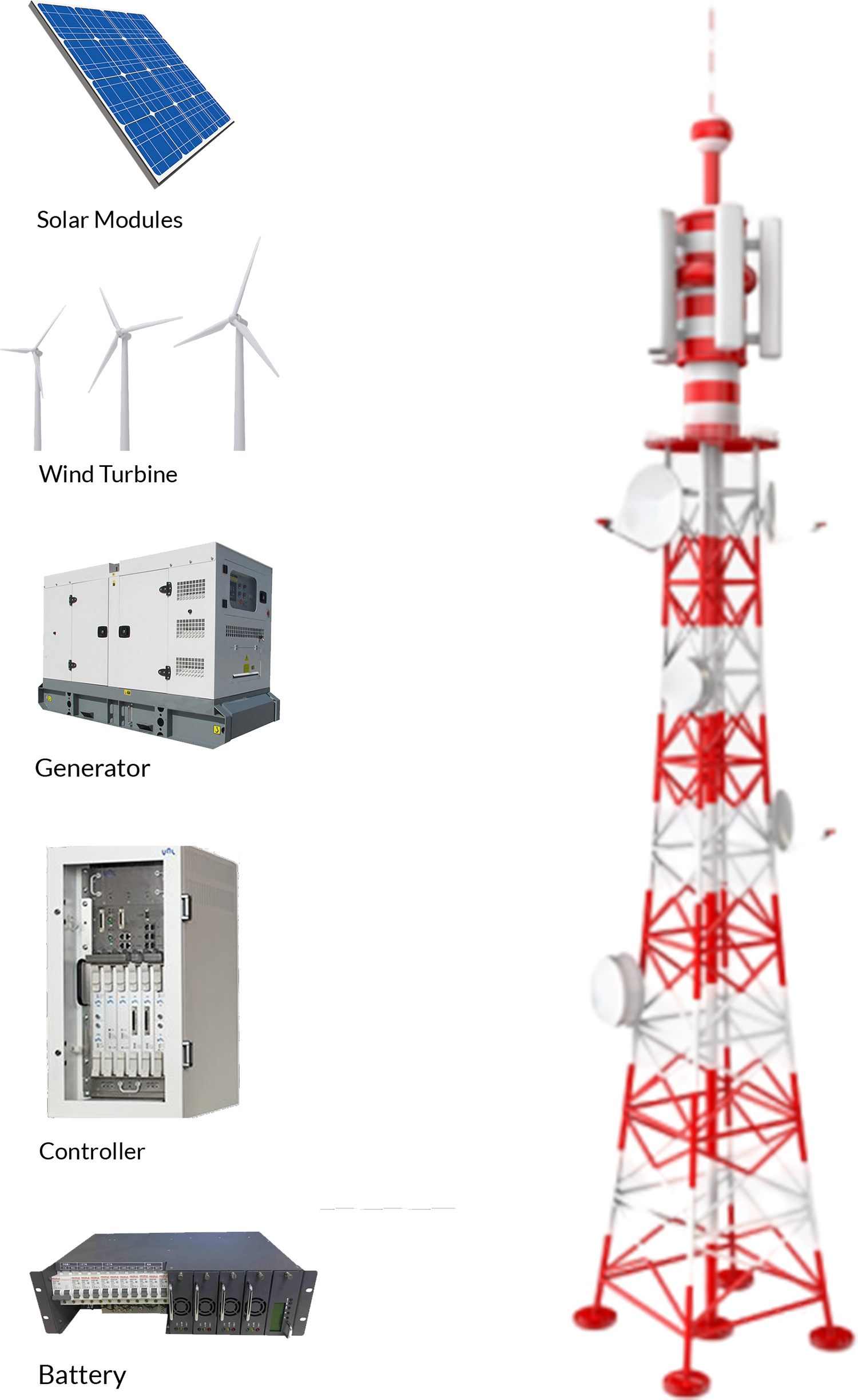
BATTERY MONITORING SYSTEMS
This Battery Management System (BMS) is designed to monitor8-16 cells in series battery pack.It has multiple functions,including single cell over voltage and under voltage protection,packover voltage and under voltage protection, charging and discharging over current protection, high andlow temperature protection,short circuit protection and protection recovery.What’smore,it can also calculate the SOC status precisely and keep voltage balancing during charging and discharging, and collect the SOH statistics. All monitoring parameter settings and data can be configurable through the communication between RS485 and the master via CAN BUS and communicating with software on PCs. (Master controller baud rate9600.)
Features
- Cell and pack voltage monitoring
- Individual cell temperature, ambient temperature and components temperature monitoring
- Charging and discharging current monitoring
- Capacity and cycle life
- Charging and discharging MOSFET power switch monitoring
- Individual cell equalization
- LED indicator
- Power switch
- CAN and RS485 communication interface
- Paralleled modules communication
- Data storage
- Battery management parameter settings
- Battery management function settings
- Pre-charge function
- Connection compensation
- Charge current limitation
